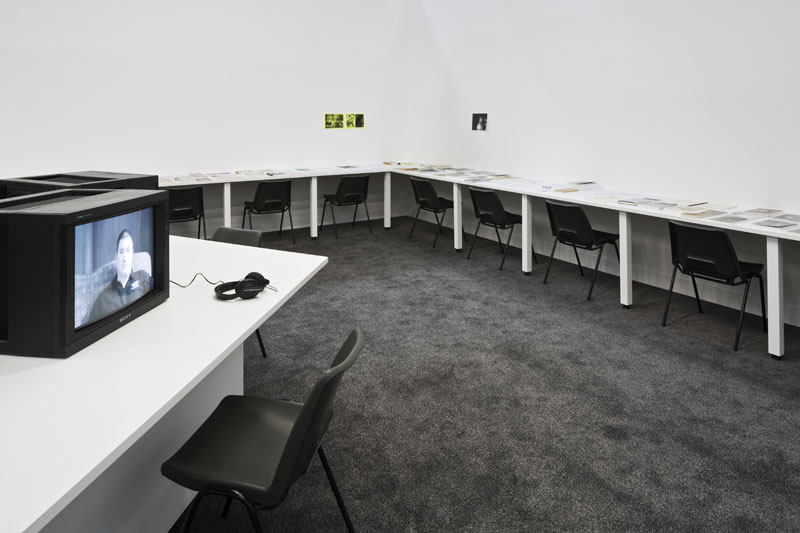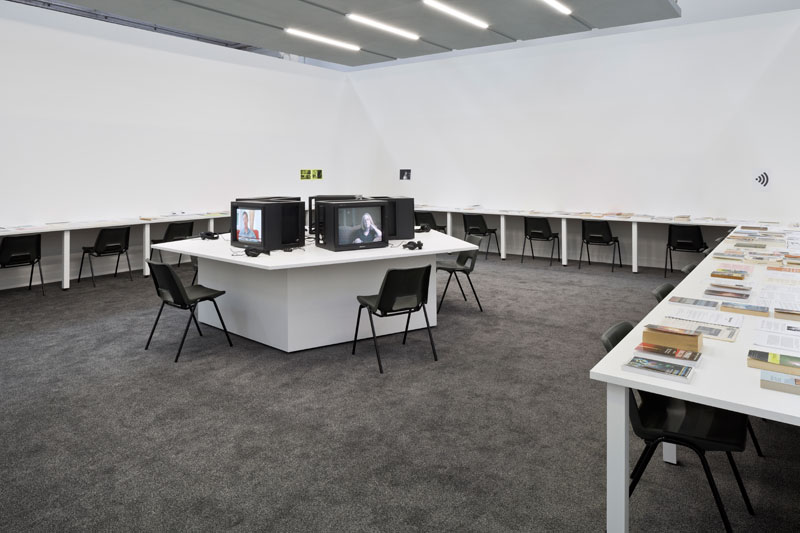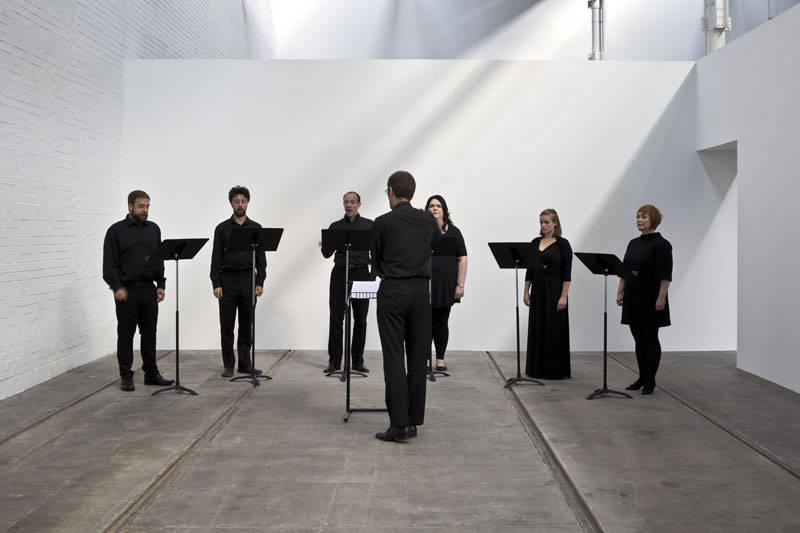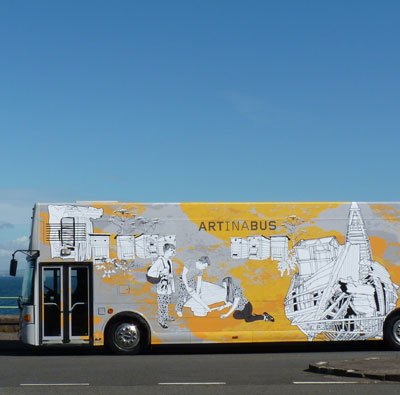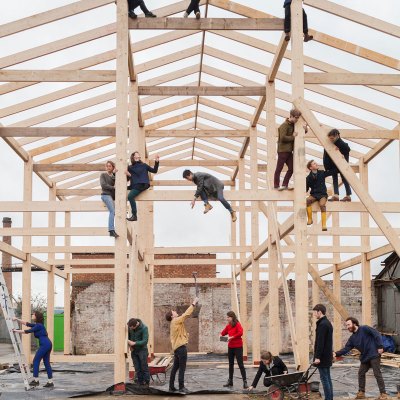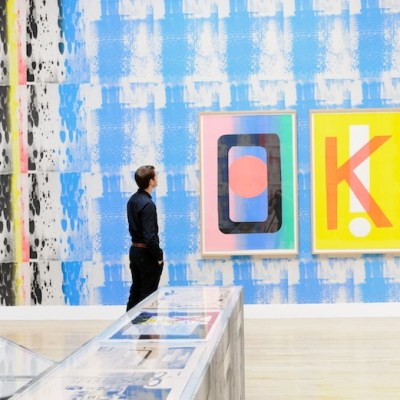I didn’t see it, but at some point during the press view of the 2015 Turner Prize, a homeless woman burst into Glasgow’s Tramway and reportedly assaulted a member of staff. Before long, several police vehicles had screeched up to the entrance and hauled her out.
If one were being unkind – as more than a few people have been – one might claim the unfortunate episode was more relevant to the state of Britain today than the art on show. Not to mention a damn sight more dramatic.
That’s not fair, though. Ever since the Turner Prize became a televised event, it has (usually wrongly) been seen as a public bellwether for the state of contemporary art in Britain. Everyone has an opinion on the annual line-up, and generally, they don’t keep it to themselves. If you write about art, it’s both easy and extremely tempting to let rip. Trust me: I’ve done it.
Yet this is the most socially and politically engaged Turner Prize that I can remember. Yes, this applies to only two of the four nominees, but in the case of one of them, the moral noblesse is so pronounced that it makes it rather difficult to address critically.
It’s certainly a change from last year, where criticism focused on the navel-gazing, self-referential cerebralism of the nominees’ work. I suspect that this year’s crop – Nicole Wermers, Bonnie Camplin, Janice Kerbel and the Assemble Collective – have been chosen in direct response to this.
Tramway is a terrific host venue, much better suited to purpose than Tate Britain, where younger artists are dwarfed by pomp and significance. The Tramway’s main space, which is criss-crossed by long-obsolete rails once used by the vehicles it was built to service, is subdivided by white partitions. The individual space granted to each artist feels just about right.
Before entering Wermers’ white box, I’m warned that it is the ‘most conventional’ display in contention. And so it proves: the work here feels like it could have been made at any point between 1956 and the present day.
The main attraction is an installation of about a dozen Bauhaus chairs over which Wermers has draped fur coats. She wants to highlight the ways in which we lay claim to a space, stopping only to draw a line under modernism’s cold, macho aesthetics. Sewing coats onto chairs is her way of making this unconscious process visible – a bit flimsy, perhaps, but not beyond the bounds of reason.
It’s a little like walking into a late night café that has just been abandoned by a hen party of down-on-their-luck society ladies. Of course, there’s more to it than that – but not much. Nonetheless, I like the simplicity of her conceit. Of the four nominees, Wermers has made the most out of the gallery itself, using the tramlines to subdivide the space. It’s clever, but not too clever.
My money is on Bonnie Camplin to win. Her Military Industrial Complex, first shown at the South London Gallery last year, is a sort of public library that questions our perceptions of reality. It really does resemble a community learning space, complete with polyester carpet and a photocopier, which visitors are free to use. Books on psychology, spirituality and conspiracy theories are neatly lined up on a desk that runs round the space, while four punishingly bright TV monitors show videos of lucid but evidently troubled case studies.
Symbols recur throughout, and by the time you leave you half suspect Camplin has implicated you in a conspiracy of her own. We’re invited to leaf through the books and watch the videos, and the overall effect is powerful. It’s an idiosyncratic condemnation of our prejudice against those we write off as mentally ill, and you can’t help but empathise with the subjects of the videos – even when they’re claiming to be possessed by Aleister Crowley.
My only niggle is that three years ago the artist Suzanne Treister staged an exhibition at Raven Row that covered very similar subject matter through very similar means. I’m not crying plagiarism, but I do think that Treister executes these ideas rather better.
Your tolerance for Janice Kerbel’s DOUG will depend largely on whether you can stomach virtuoso choral music. I can’t, and to be honest, I found it phenomenally irritating. Six singers, all classically trained, give a pitch perfect performance of a piece that lists every comedy accident in the slapstick handbook. Great, if you like that sort of thing. But despite a handsome Richard Long pastiche of a lyric sheet (why Richard Long, of all people?), it’s by far the weakest link here.
And so we come to the token ‘controversial’ nominee. Assemble are a group of young architects who have made their name with a truly ground-breaking urban renewal scheme in Granby Four Streets area of Toxteth. It was a run-down triangle of Victorian terraces facing imminent demolition, but Assemble’s imaginative regeneration scheme has given the embattled residents their say – and the right to stay in their homes. It’s a triumph for the little man over the all-powerful forces of identikit ‘regeneration’.
I walked into Tramway expecting to praise their efforts to the skies. Who cares about blurring the boundaries between art and architecture? Surely we’re all inter-disciplinarians now.
The trouble is – and it breaks my heart to write it, given that the prize money would probably go towards an equally positive scheme – it just doesn’t work here. In truth their mocked-up house, a recreation of a property in the Granby Four Streets area, feels more like a show home than an art installation.
Given their profession, it seems churlish to complain too much about this. But while art can coexist with function in the same breath, this is too weighted towards the latter to achieve the symphony a successful crossover requires.
As for the exhibition as a whole? Perversely, the flaws of the works actually add to the interest factor. Even Kerbel’s warbly contribution adds something to the overall effect, and there is a sense of continuity between the four sections that you simply wouldn’t get at Tate Britain. This praise may sound faint, but in the context of the Turner Prize’s recent history, that is about as good as it gets.
The Turner Prize 2015 is at Tramway, Glasgow, until 17 January 2016.
